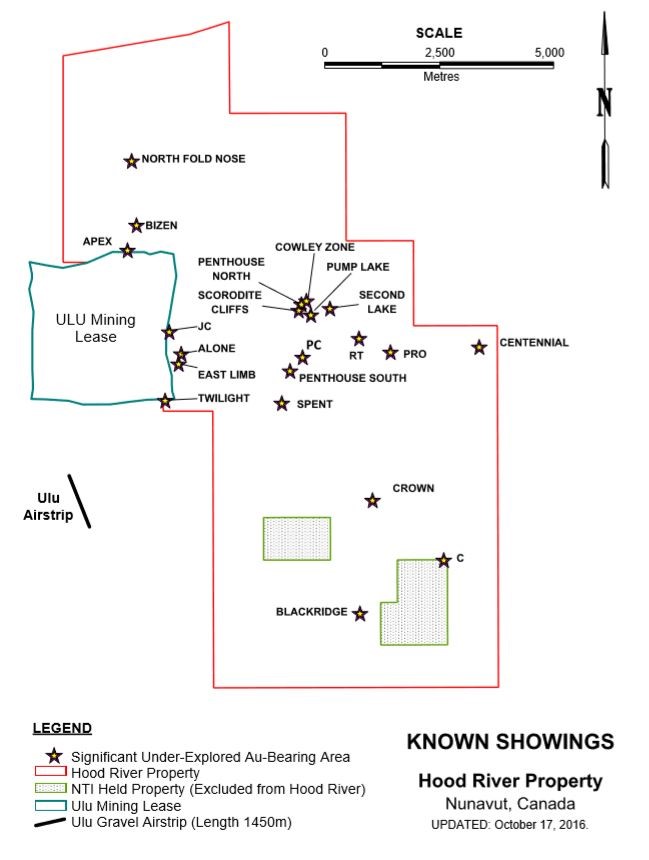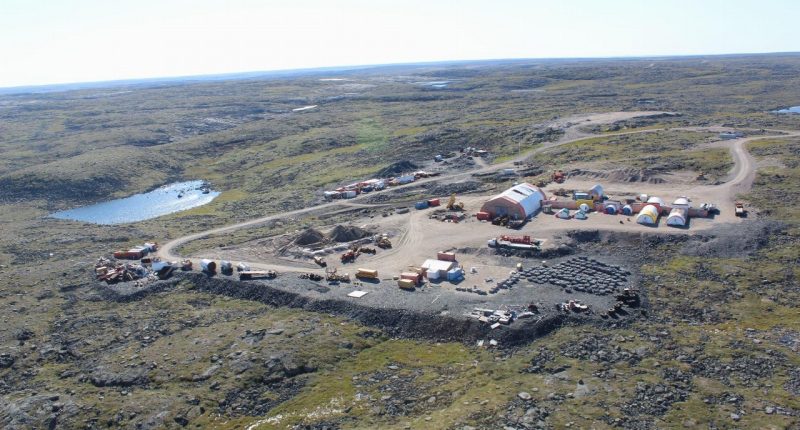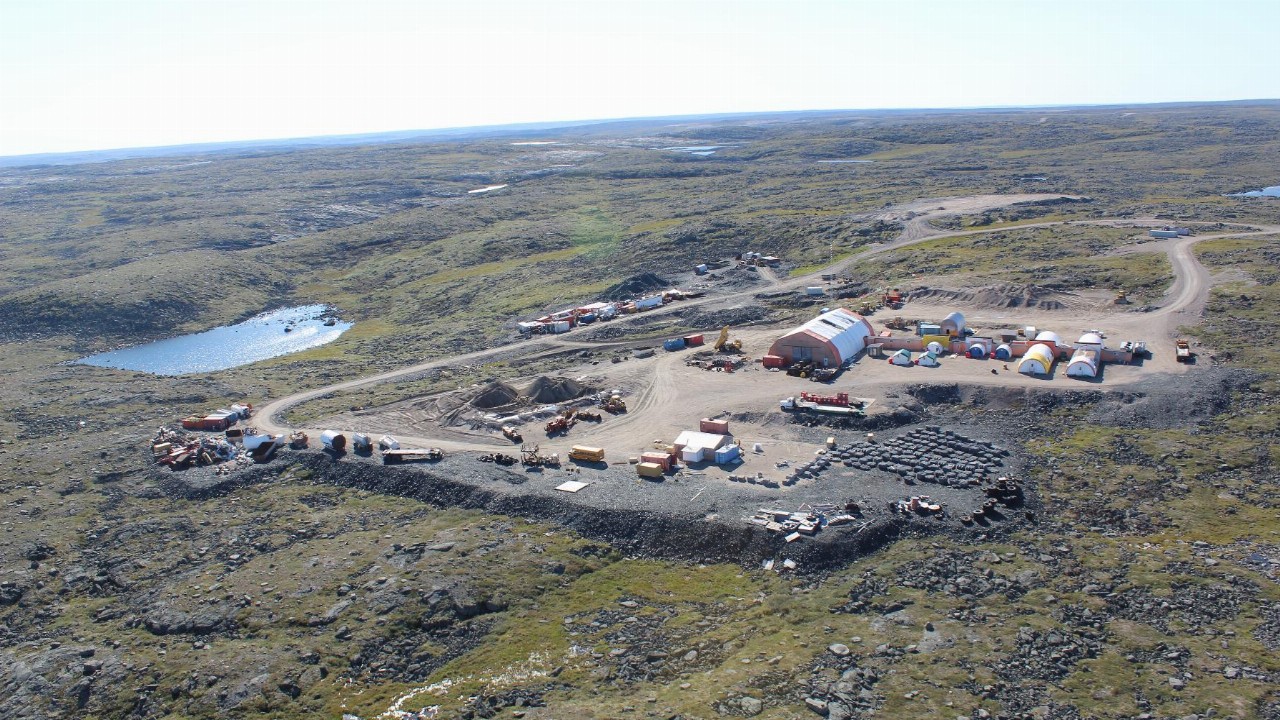For centuries, Northern Canada has been hailed as one of the most prolific gold mining regions in the world. The great Klondike Gold Rush of the late 1800s saw an estimated 100,000 prospectors flood the Yukon Territory in the hope of uncovering vast fortunes, bringing explorers from as far away as Seattle and San Francisco, and even Africa.
Since then, however, the focus has shifted to other promising, more accessible jurisdictions, like British Columbia and Ontario. But recent years have seen a resurgence in popularity for the North’s untapped potential, with major producers like Victoria Gold and Agnico Eagle currently running successful operations.
Among a litany of hopefuls is Blue Star Gold (TSXV:BAU, OTC:WPCZF, Forum), which recently unveiled significant results from a 2020 exploration program at its Ulu and Hood River properties in Nunavut’s Kitikmeot region, roughly 525 kilometres north-northeast of Yellowknife and 210 kilometres southeast of Kugluktuk.
Contiguous to the Ulu property on its north, east and south borders, the Hood River property is held under a renewable 20-year mineral exploration agreement with Nunavut Tunngavik Incorporated, while the Ulu property consists of a renewable 21-year mining lease.

Ulu hosts the advanced-stage Flood and Gnu Zone deposits, where a major high-grade gold resource has previously been identified, as well as a number of other zones – North Fold Nose, Zebra, Bizen, Apex and Contact – which are thought to be associated with the five-kilometre-long Ulu regional fold that extends from the Ulu lease to the north of the neighbouring Hood River property.
Many of these high-priority target areas that exist outside of the Flood Zone have only been tested with relatively shallow drilling, and Blue Star believes there is significant potential to make new discoveries at greater depths.
The 2020 exploration program, backed by a C$1.76 million private placement that was completed in mid-December, included 7,621 metres of drilling across 38 diamond drill holes.
10 holes were completed at the Ulu and Gnu Zone deposits in an effort to expand the known resource and provide data for resource modelling, while 28 were completed on a variety of exploration targets across the two properties, including 14 holes at the North Fold Nose Zone.
Most significantly, Blue Star intersected 14.95 grams per tonne of gold over 13.8 metres and 9.65 grams per tonne over 6 metres at the Flood Zone. While there’s no exact numerical definition for “high-grade” assays, anything over 5 grams per tonne is generally considered a very strong result.
What’s next?
With such promising intercepts, the company now believes that some of the Flood Zone resource could be upgraded from the inferred category to the indicated category.
According to a Technical Report published in July 2015, the Flood and Gnu Zones host a collective measured and indicated resource of 2.5 million tonnes at an average grade of 7.53 grams per tonne of gold, representing 605,000 gold ounces, and an inferred resource of 1.26 million tonnes at 5.57 grams per tonne of gold, representing 226,000 ounces.
Reinvigorated by the successful exploration program, Blue Star is now engaged in an extensive compilation of all previous technical data, which is expected to lead to an updated geologic model for both the Flood and Gnu Zone deposits. Early results from this work have given way to a number of high-quality, near-surface targets within a one-kilometre radius of the Flood Zone.
An updated resource estimate will follow thereafter. In addition to the Flood and Gnu Zone deposits, Blue Star says there may be sufficient data available to complete an initial resource estimate for the North Fold Nose Zone as well.
In terms of future exploration work, there’s thought to be significant potential to expand the resources at the Flood and Gnu Zones, both nearby and further afar on the company’s expansive land packages. Planning is now underway for a 2021 exploration program, which is expected to primarily focus on these areas, while a secondary focus will target regional areas at the Hood River property, where several high-grade gold showings have already been identified.
In order to make good on its ambitious goals, Blue Star has been busy over the last few months decking out its management and exploration teams.
On August 14 last year, the company announced the appointment of Grant Ewing – a professional geologist by trade with more than 25 years of experience in the mineral sector – as Chief Executive Officer.
Then, on October 21, Blue Star appointed Eugene Flood – discoverer of the Flood Zone in June 1989 on behalf of BHP Minerals – as a technical advisor. Between 1989 and 1994, he also identified a number of other key zones at the Ulu property, including the Central Zone, West and East Limb, South Zone, Gnu Zone, Zebra, Apex and the North Fold Nose Zone.
Most recently, Darren Lindsay was appointed as Vice President of Exploration on January 18, with a mandate to lead the company’s exploration division. Darren has extensive experience in Nunavut, leading belt-scale exploration and resource expansion programs. For more than 15 years, he worked in the Slave Structural Province with the likes of BHP Minerals, Inmet Mining, Miramar Hope Bay, Newmont and NxGold, with additional experience on orogenic gold deposits in Ontario, Guyana, Ghana and Western Australia.
Darren and Eugene’s regional expertise combined with Grant’s weighty objectives and a variety of exploration successes to date mean that, although Blue Star has a lot of work ahead over the next few years, we could see big things in the future. Take into account a market capitalisation of just $20 million, and it would seem that there’s also a lot of room to grow.






